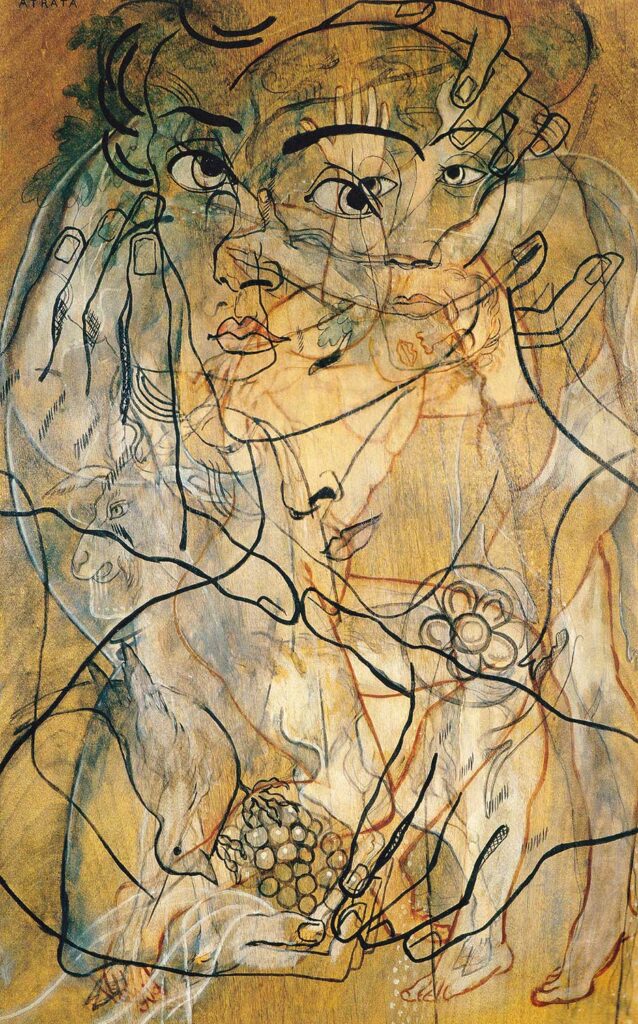Atrata by Francis Picabia was created in 1929. The painting is in private collection. The size of the work is 149,5 x 95 cm and is made of oil and pencil on panel.
“I want a painting where all my instincts may have a free course,” the French Surrealist Francis Picabia once said. And this is precisely what he achieved with Atrata, circa 1929, a remarkable work in which multiple layers of overlapping images – faces, animals, fruit – come together to form a picture of singular beauty. It is an example of the artist’s Transparences, a series reflecting the “painterly renaissance” he had embarked upon in the 1920s after years of experimentation with Dada and abstract techniques. Read more in Sotheby.
About the Artist: French avant-garde painter, poet and typographist Francis Picabia was born in Paris. Picabia’s artistic ability was apparent from his youth. In 1894, he copied a collection of Spanish paintings. During the late 1890s, Picabia began to study art under Fernand Cormon and others at École des Arts Decoratifs.
Early in his career, from 1903 to 1908, Picabia was influenced by the Impressionist paintings of Alfred Sisley. His subject matter included small churches, lanes, roofs of Paris, riverbanks, wash houses, and barges. From 1909, his style changed as he came under the influence of a group of artists soon to be called Cubists. Picabia continued his involvement in the Dada movement through 1919 in Zürich and Paris, before breaking away from it after developing an interest in Surrealist art. Read more
Order a reproduction of this work (printed on canvas)

